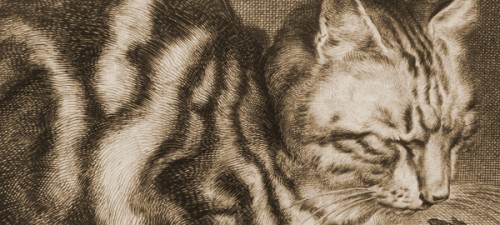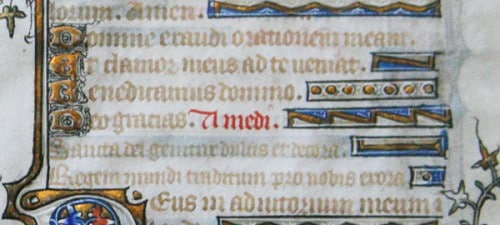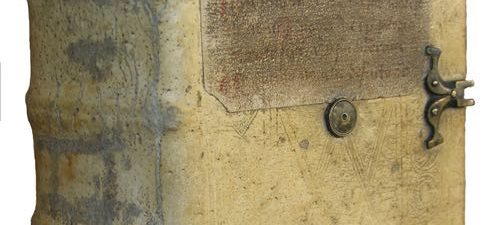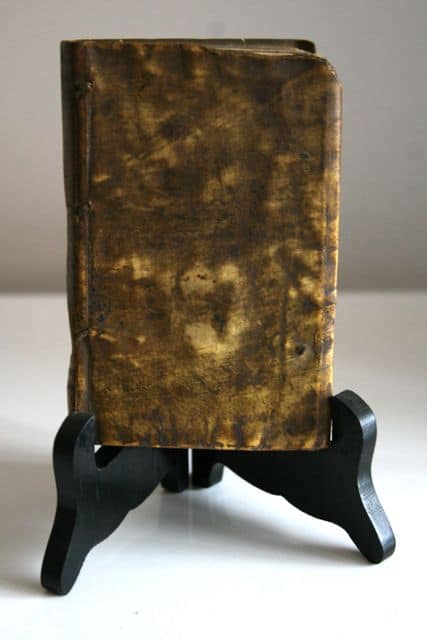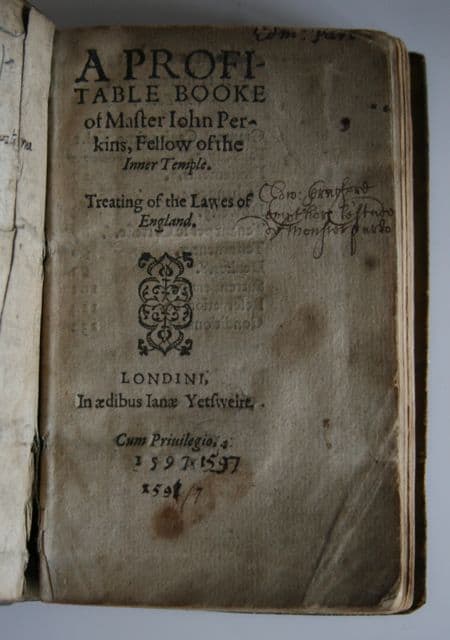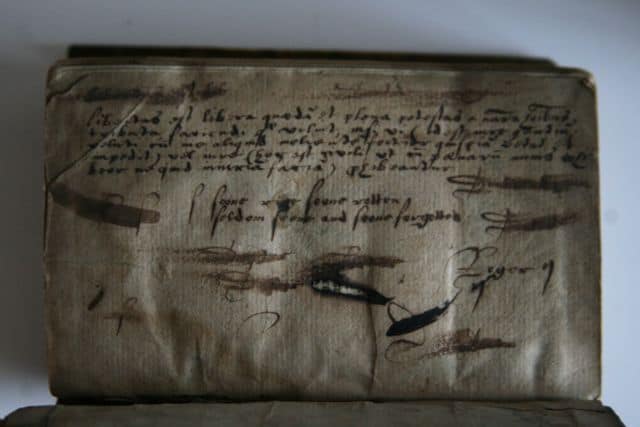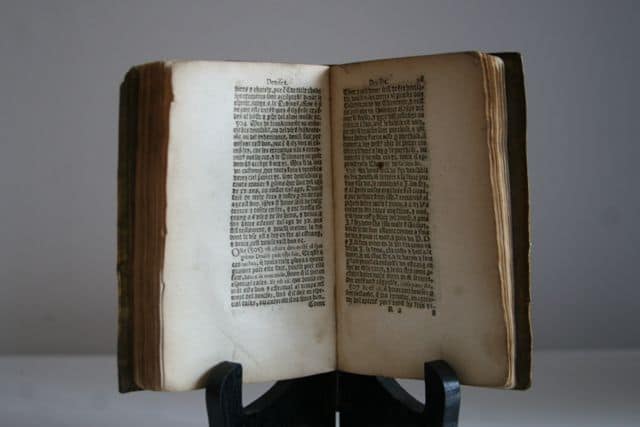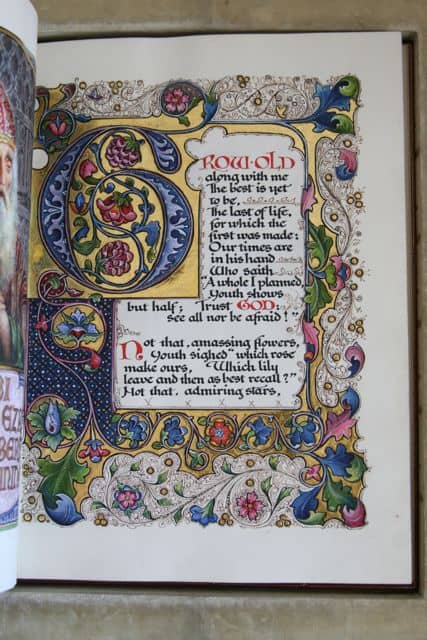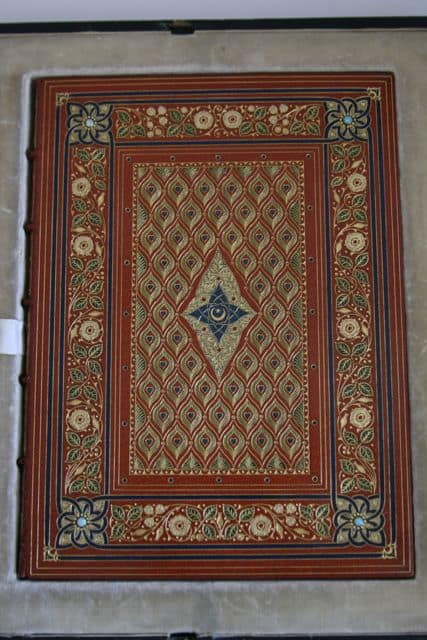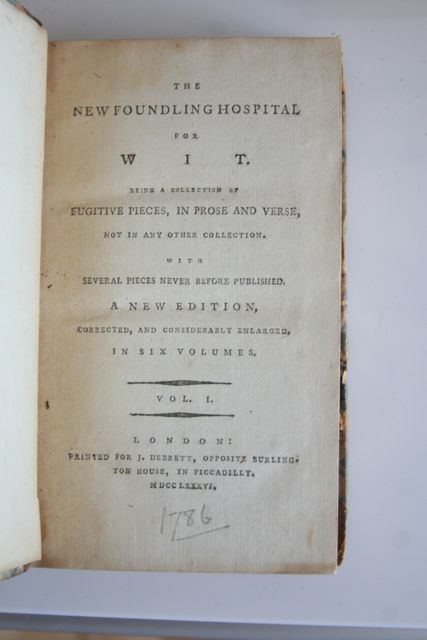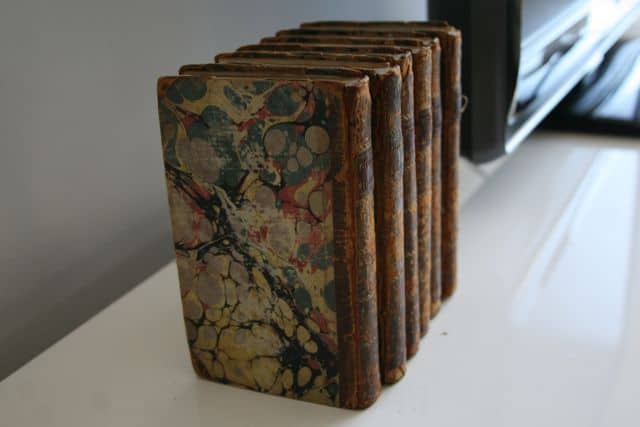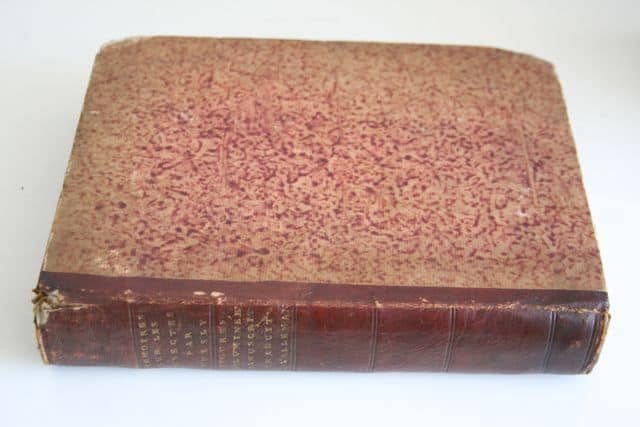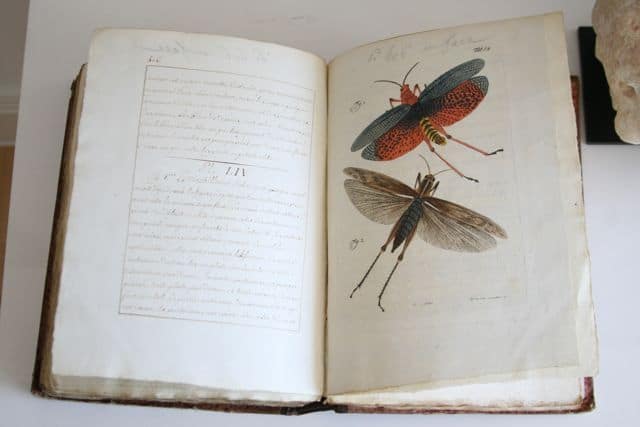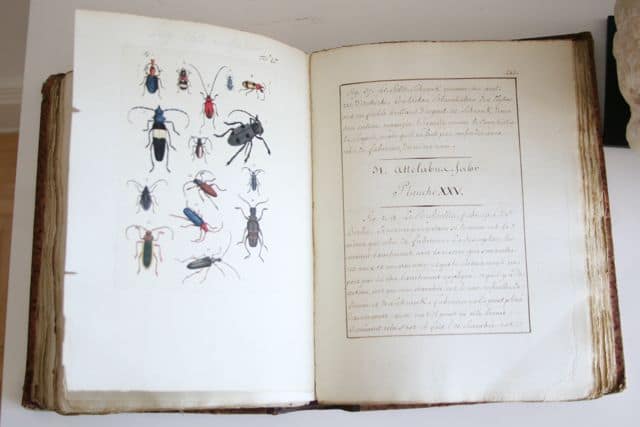July 8, 2010
PRINTED 1597: ORIGINAL ELIZABETHAN LAW BOOK
A TUDOR WOMAN PRINTER
CONTEMPORARY MANUSCRIPT EARLY ENGLISH PROVERBS
The Book:
Perkins, John. A profitable booke of Master Iohn Perkins, Fellow of the Inner Temple Treating of the Lawes of England. Londini, Yetsweirt, 1597. Signatures: A-B, B-P¹²; p., 168 l. 128 mm, A TALL WIDE-MARGINED COPY. BLACK LETTER, contemporary limp vellum, wear and minor loss to upper right corner of vellum, lightly browned throughout, some staining, ownership marks. Elizabethan rhyming couplet to verso of last flyleaf.
This fascinating 16th century law book was prepared for students by John Perkins, a member of the Inner Temple. The Inner Temple was so named because it was in earlier times occupied as the residence of the Knights Templars, which after the suppression of the order, was purchased by some professors of the common law, and converted into hospitia, or Inns of Court.
The book was published/printed by Jane Yetsweirt, a notable Tudor woman letter-writer, showing that 16th century literate women were not solely found in the aristocracy. However, as the 1879 Saturday Magazine remarks about her ‘ “Poor thing! She had trouble with the men, just as women do now who undertake to compete with them in business. “She got into trouble with the Stationer’s Company,” says the record, ” and her letters are extant complaining of the company’s ill usage of her.”[Ref: Perkins, Frederic Beecher (ed.), The Saturday magazine, Volume 1., 1879, pg. 487]
Another fascinating point is that on the rear flyleaf is penned in contemporary manuscript an Elizabethan couple: “Soone ripe, soone rotten / Seldom seene and soone forgotten”. Both are well known English proverbs, the first gnerally considered a coarse or vulgar proverb about the qualities of young marriageable women who soon turn barren. The proverb in this form seems to originate early in the 16th century as there is recorded the 1546 phrase “In youth she was towarde [promising] and without evill. But soone rype sone rotten. [Ref: 1546 J. Heywood Dialogue of Proverbs i. x. C4V] . The second line of the couplet, “Seldom seene soone forgotten,” appears in elegies dating back to the 14th century. [$4500]
